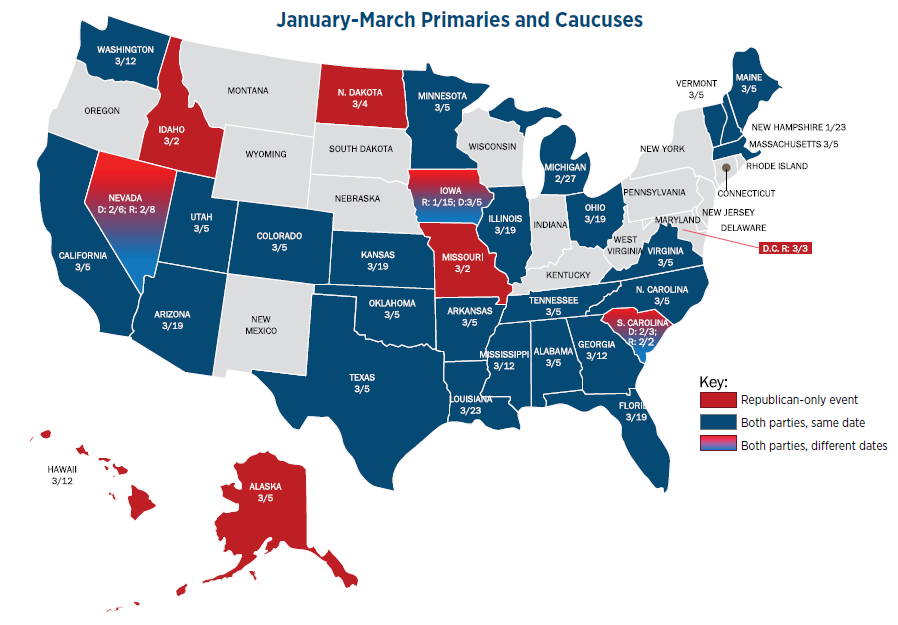

In 2022, Americans voted for gridlock, giving Republicans narrow control of the House and Democrats narrow control of the Senate. By now, precedent and our forecast predicted that the books would be closed on FY24 spending. They aren’t. Not a single regular FY24 appropriations bill has been adopted. In fact, both House and Senate leaders appear to be relitigating the Fiscal Responsibility Act (FRA) that set the parameters for FY24 and FY25 spending.
Without a bipartisan, bicameral top-line agreement, spending negotiations have stalled, and we don’t expect one to emerge before late January.
Since taking the gavel, Speaker Johnson (R-LA) has moved the needle. A series of test votes on partisan House Appropriations Committee-approved FY24 appropriations bills provided clear evidence that House Freedom Caucus members (Republicans) lacked the votes needed to cut non-defense spending below FRA levels. Those votes effectively raised the floor on civilian agency spending by $119 billion and consistent veto threats from the Administration increased its influence over the final results. That’s progress.
Senate Appropriations Committee Chair Murray (D-WA) moved bills through Committee with strong bipartisan votes. She added billions in “emergency” spending to boost FY24 non-defense spending above the levels outlined in FRA and the reported side deals negotiated by OMB Director Young and then-Speaker McCarthy (R-CA).
The trading range for a FY24 spending deal also narrowed when Senate Majority Leader Schumer (D-NY) failed to get the 60 votes needed to pass the Senate’s $110.5 billion emergency supplemental bill. The Senate bill largely tracked President Biden’s supplemental requests with aid to Ukraine, Israel, Gaza, the Southwest Border, Hawaii, and other areas.
The bottom line—House Freedom Caucus members lack the House votes to achieve their spending and policy objectives and Senate Majority Leader Schumer (D-NY) can’t move spending bills that ignore House and Senate GOP spending and policy priorities.
What we also agreed to was what is written in the law, which is the [debt limit law] numbers on topline. “The Senate has been projecting and writing well above that [by]… billions of dollars. That’s not what the law says.
Speaker Johnson (R-LA), December 12
Both results narrow the trading range by raising the floor on non-defense spending and lowering the ceiling on defense spending. Notwithstanding President Zelensky’s return visit to Washington this week to push for more aid to Ukraine now, Senate Republicans continue to support Speaker Johnson’s position—“national security begins at our own borders.”
The irony of the situation is that the eventual solution will be a spending package that closely tracks a proposal floated by former Speaker McCarthy in talks with President Biden over the first FY24 CR that ultimately cost McCarthy his job. In the end, expect Democrats to use some “side deal” offsets permitted under current budget rules to effectively boost non-defense spending. In exchange, Republicans get increased funding and improved security at the southwest border.


Source: 270 to Win, FBIQ
BUCKLE UP!
An added wrinkle in these negotiations is that the 2024 Presidential election season begins next month with primaries and caucuses in 34 states (plus some U.S. territories and D.C.) scheduled before the end of March (see Map above). Because party primaries and caucuses reduce incentives for bipartisan compromise, negotiators have a short runway for a deal.
In January, we’ll have an even narrower margin in the House as McCarthy leaves the stage. Add to the mix recent Senate retirement announcements, fluctuating poll numbers, and control of the White House, the House, and the Senate are all up for grabs in the November elections.
FORECAST
20% a partial government shutdown occurs before the end of February.
FORECAST
70% an additional CR is needed before a final FY24 spending deal is implemented.